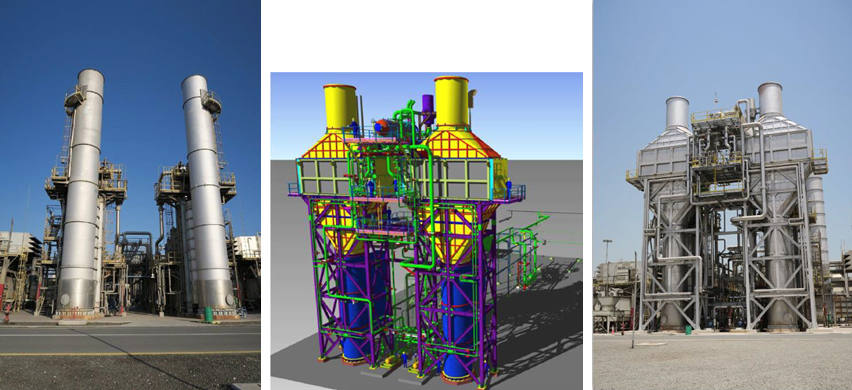Waste Heat Recovery Units can be used to optimise cycle efficiency through production of additional steam using heat in flue gas streams that would otherwise be lost to atmosphere. Utilization of this waste heat can significantly reduce the cost of firing auxiliary steam generator, increase the overall efficiency of the plant and lower carbon emissions. This steam can be used for a variety of purposes including; heating process fluids, fuel, or combustion air, etc.
Harris Pye Engineering Group has extensive knowledge in recovering waste heat from the exhaust of boilers, main engines, gas turbines and processes and can design bespoke units dependent upon process inputs; flue gas quantity, temperature, composition, allowable back pressure and heating requirements.
Waste Heat Boiler Design
Harris Pye are world leaders in the design, fabrication and installation of waste heat recovery systems. A unique feature of our capabilities is our ability to manufacture a broad range of spiral wound tubes on our finning machines in house from bare steel ‘H’ tube and double ‘H’ fins in the case of high fouling flue gas, or solid spiral and serrated helical fins in the case of clean, low fouling combustion products.
The latest addition to our range is the Integrated Steam Space design WHRU, primarily for use on auxiliary engines. Space design WHRU, primarily for use on auxiliary engines. The inclusion of the steam space within the unit enables steam generated to be directly fed into the plants’ main distribution system, without the need for a separate receiver or use of the auxiliary boiler drum. As such, overall plant flexibility, redundancy and reliance are all improved in addition to the significant cost saving over generating this steam with the auxiliary boiler.

Performance Modeling
Computer models can be set up to accurately evaluate the performance of virtually any boiler. Typical applications for computer models include:
- Diagnosis of problems with existing plant –often a comparison with computer model results against actual performance data can resolve relatively complicated operation problems
- Investigating the potential to increase the rated capacity of existing plant
- Evaluating the performance of boiler plant on different fuels
- Identify load limits and bottle necks on existing steam plant
- Modeling balance of plant; turbines, air heaters, deaerators, pumps, etc.
A comprehensive report would typically be prepared to summarize key findings and recommendations.

Example: UAE Refinery WHRU Project
Scope: Full structural / thermal / mechanical design, manufacture, installation & commissioning



